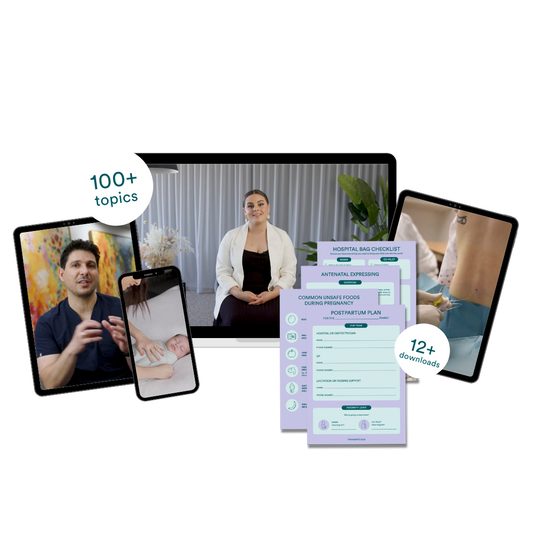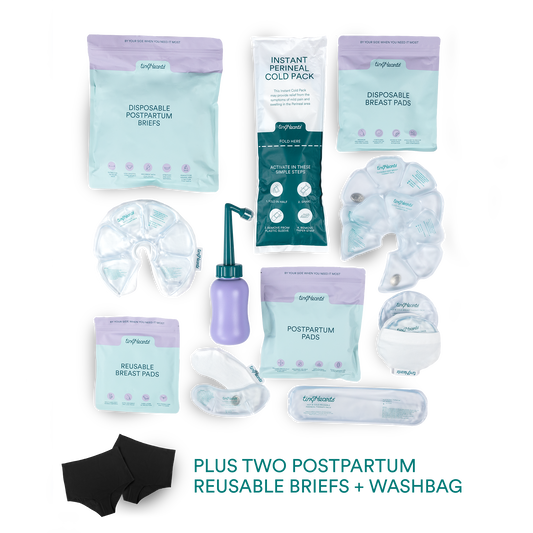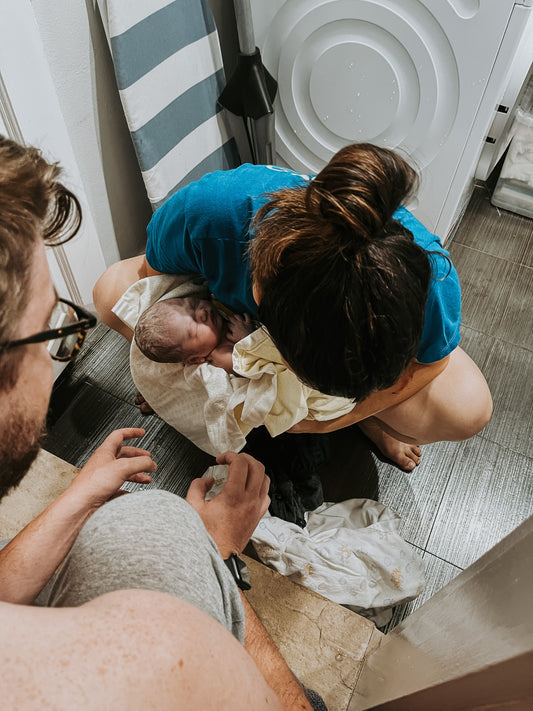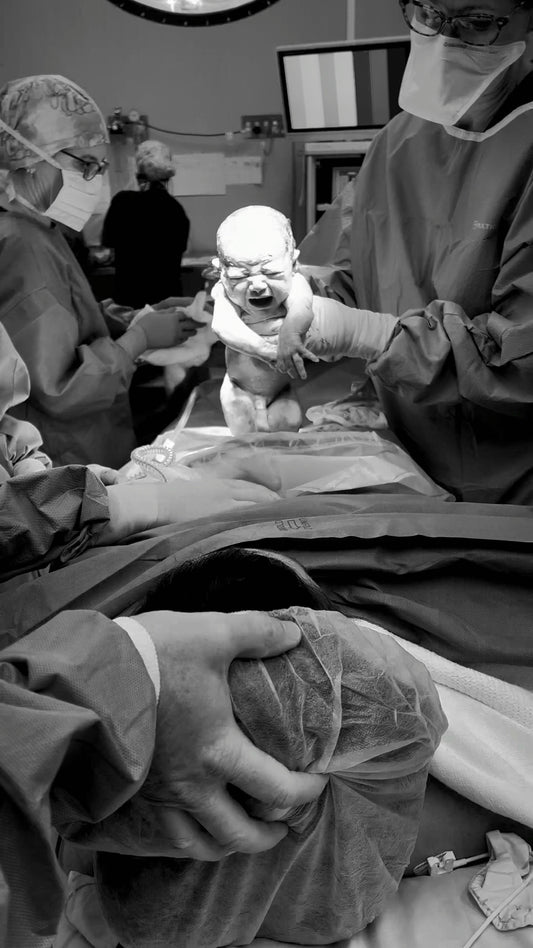I had so many of you reach out wanting to know about preventing dog bites in your little people; so I’ve pulled in the big guns. Today I am joined by Mel Ritterman from Cooper and Kids to chat about how we can better understand our dogs to prevent bites. Mel shares some of her tips to create a more positive relationship with your dog, as well as a safer environment for your bub. I’ll leave it to Mel to give you the information you need from here!
According to the Australian Veterinary Association, “most dog bites take place in homes with familiar family pets, and most people bitten by dogs are children under 10 years of age.” The numbers are alarmingly high. In this article, I want to share some important tips on supervision and management, as well as insights into how becoming more aware of what your dog is trying to communicate can help prevent injuries and even save lives. Teaching this to your children is essential, and by doing so, you’ll also help your dog lead a happier, more fulfilling life.
One of the most important things to understand is that dogs and humans are two different species with very different ways of communicating. For example, humans often show affection with hugs and kisses, but to some dogs, this can actually be quite frightening. Dogs sniff other dogs’ backsides something we certainly don’t do! As dog guardians, it’s up to you to learn to listen and understand what your dog is trying to tell you before it’s too late. Educating parents, grandparents, nannies, the kids, caretakers, and all dog guardians is key to helping prevent dog bites from happening in the first place.
I’ll admit, I’ve made mistakes in the past examples of which you might see in the photos below. Until you have the knowledge and understanding, it’s not your fault for not knowing. However, once you have these tools, it becomes much easier to see and, once seen, it's hard to ignore.
Here are five very important tips to help you become more dog-aware, foster a more positive relationship with your dog, and create a safer environment for your children.
1. Never Punish a Growl
It’s very important not to punish a dog for giving warnings. A dog communicates when they feel uneasy or uncomfortable in a situation, and it is your responsibility as their dog guardian to recognise these signals before they escalate into a bite. When a dog growls or shows teeth, although these may seem frightening, they are actual forms of communication. You should be thankful for and respectful of these warnings.
It’s quite common to hear about dogs that bite "without warning," especially when it’s the family dog. However, in most cases, the dog’s subtle warning signals were either unnoticed or ignored, and the dog was punished or disciplined for “being bad.” While we all prefer a dog not to feel the need to growl, it’s far better for the dog to warn of a problem than to bite unexpectedly. If a dog is punished for giving warning signals, not only is their primary communication tool lost, but suppressing growling may also increase their anxiety about the situation.
Always make sure to investigate WHY they growled and how you can prevent that scenario from happening again the future.
2. What to Look For and When to Intervene
Learning to understand body language can really be a huge way to avoid bites from happening. Once your dog can see that we are understanding what they are trying to tell us and we are respecting this, you will be able to build a much more solid relationship based on trust and respect.
I have a whole article on Body Language and how dogs Communicate so please make sure to have a read. Here are some basics…
Subtle signs that a dog may be uncomfortable are:
- A simple yawn
- Rolling their eyes (half-moon/whale eyes)
- Licking the lips
- Turning their head away
- Shaking off
- Excessive grooming such as scratching or licking
- Quick and shallow breathing
- Stiff body
- Tense facial muscles
- Closed mouth

More obvious signs that a dog may be feeling uncomfortable include:
- The dog trying to escape or remove itself from the situation
- A little growl
- Baring their teeth
- A bite
Now that you know these signals, start to look out for them.
When you observe these signs, take steps to make the situation more comfortable for the dog. If your child has inadvertently caused the dog to feel uncomfortable, be sure to point this out so they can start to learn and understand (if they are old enough of course).
I’ve compiled a few comparison photos to illustrate a happy dog versus a dog showing signs of discomfort, stress, or avoidance.
Based on the signs I have listed above; can you tell how Cooper is feeling in these photos?

Yep, you guessed it…
- Top Left: Happy relaxed Cooper.
- Top Right: This looks like a “Kiss to Dismiss”. Lots of people think their dog licking a child is cute. Often (not always) it is their way of trying to move a child away from them. I can tell that Cooper is uncomfortable here as the rest of his face is also very tense. I would say Harper is too close and he is trying to push her away.
- Bottom Left: This is a clear yawn of discomfort from Cooper – our children should NEVER climb on dogs, ever! He is trying to communicate to me that he is not comfortable with what she is doing to him.
- Bottom Right: Cooper is happy and relaxed.

- Top Left: Cooper is relaxed
- Top Right: Cooper is showing avoidance behaviour here, he is turning away, his ears are pinned back and his whole body looks like it is trying to move away from Harper.
- Bottom Left: Kiss to Dismiss. This is not a happy kiss, Cooper’s face is tense and he is staring at me, trying to tell Paxton and me that he is not enjoying this moment.
- Bottom Right: Cooper is relaxed.
3. How to Intervene When You See Your Dog Is Not Happy
React positively rather than negatively. Once you recognise subtle body language indicating your dog is uncomfortable, you should positively redirect either your dog or your child away from each other. Call your dog over and reward him with a treat or a pat when he comes. If your dog is relaxed where he is, encourage your child to move away by saying, “Oh wow, come and see this.” Avoid reacting with anger or negativity, dogs can pick up on your emotions. Negative reactions can create bad associations between your dog and your child. Instead, keep interactions light and positive, rewarding good behaviour and fostering a healthy, positive bond.
Give your dog space. You’ll notice that in the photos above, Cooper looks most relaxed when children give him space. As soon as they get too close or try to put multiple hands on him, he appears uncomfortable. Always respect your dog’s need for space: never allow a child to climb on or hug the dog. Patting with one hand is enough, and remind your children that most dogs don’t like hugs or kisses as they invade their space and make them uncomfortable.
Never invade a dog’s personal space – Invites Decrease Bites.
When interacting with your dog or other dogs, call them to you rather than approaching them. If they don’t come, they’re not in the mood for petting. Explain this to your children, and instead of forcing interaction, blow a kiss or wave to show kindness. Your dog will appreciate it.
Always explain to your children what happened and why, so they learn for next time. Use these moments to teach about dog body language perhaps the dog doesn’t enjoy hugs or being climbed on. Teach them to blow kisses from a distance or give the dog space. Kids learn by example, so model safe, respectful behaviour at all times.
4. Safety and Supervision Are Essential
As a parent, establishing rules and boundaries is crucial. Children must learn to respect dogs their bodies, feelings, space, and belongings. The image below from our friends at The Family Dog highlights key principles, but teaching this takes time, constant reminders, modelling, and reinforcement when done correctly.
Make sure your child does NOT:
- Climb on the dog
- Chase the dog
- Pull hair, ears, tail, etc.
- Stick fingers in the dog’s eyes, mouth, nose, ears, or bottom
- Play with the dog’s food or water bowls
- Stand over and watch the dog eat
- Annoy or wake a sleeping or resting dog
- Take food out of the dog’s bowl
- Take anything out of the dog’s mouth
- Tease the dog with a toy or food it wants
When it comes to kids and dogs, many people say, “Never leave the dog and child alone,” or “Supervise, supervise, supervise.” But what does that actually look like?
According to Family Paws Parent Education, there are five types of supervision. It’s your responsibility as a dog guardian and parent to understand the impact of each and always aim for 100% active supervision or 100% proactive supervision. Active supervision is when two awake adult eyes are actively watching your dog and child and you are aware of what to look for.
5. Management Is Your Best Friend
As part of proactive supervision, creating a safe zone for your dog is essential. Management gives both parents and dogs a much-needed break from the chaos and helps your dog feel secure. Constant supervision is exhausting for everyone, so tools like baby gates, playpens, crates, or closing doors, can make a big difference.
If you don’t already have a safe zone, set one up today. Introduce it slowly and positively, incorporating food enrichment such as a lickimat, Yoggie Pot, a Snuffle Mat, or chew toy to help your dog settle confidently. Separation shouldn’t be seen as punishment it's a way for everyone to relax and recharge. As long as you introduce it correctly and positively.
Remember, good intentions aren’t enough. We want dogs to enjoy their interactions with children, not just tolerate them.
-----If you need any questions or require any help with your pooch, feel free to reach out to Mel from Cooper and Kids by clicking here.
Disclaimer: Cooper and Kids will not be liable for anything that happens to you, your dog or children by following the advice and tips in this article. If you have real concerns or worries about your dog and/or safety of your children, please seek out a professional to come and assess the situation ASAP.
Updated: 11th September 2025.








